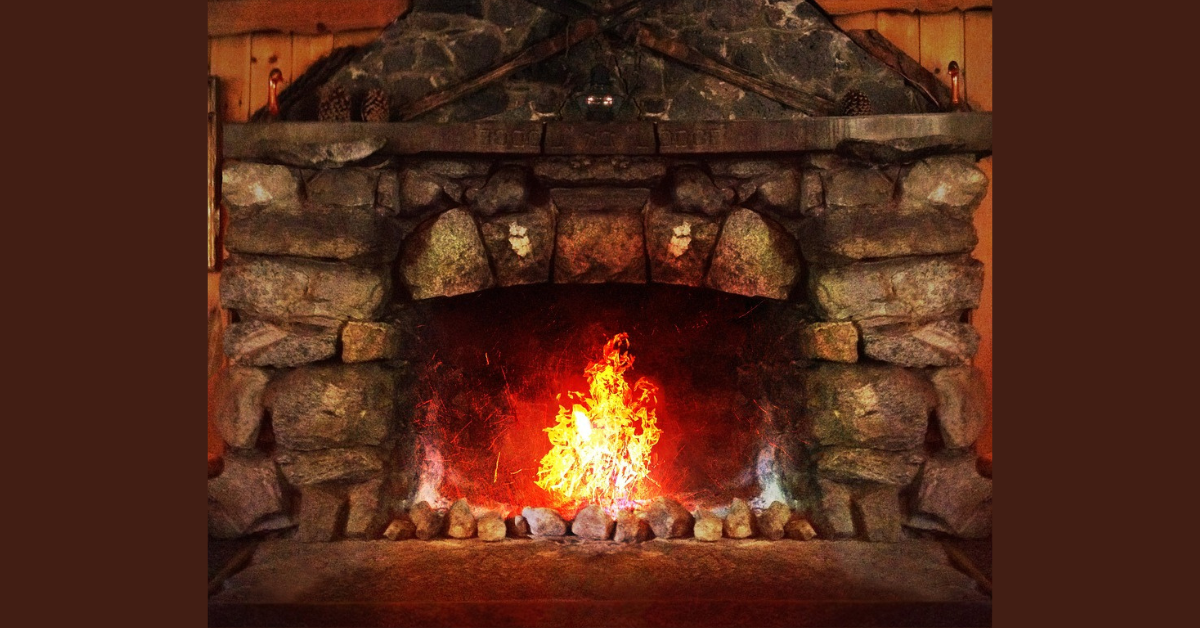Hearth: The Heart of the Home

What is a Hearth?
A hearth is the floor of a fireplace, often extending into the room and serving as the base where fires are built. It is typically made of non-combustible materials such as brick, stone, or concrete. Traditionally, the hearth was essential in every home for cooking, heating, and socializing. Today, while the hearth no longer serves as the primary source of heat or cooking in most homes, it still holds cultural and aesthetic significance.
The hearth represents warmth, comfort, and family, often symbolizing the “heart of the home” where families gather to relax and connect. It remains a focal point in many modern living rooms, contributing to a sense of ambiance and character.
Types of Hearths
Hearths come in various designs and materials, depending on the style of the home and the intended purpose. Here are some of the most common types of hearths:
A. Traditional Hearth
A traditional hearth is typically made of stone, brick, or tile and sits flush with the floor. It can extend into the room or be raised slightly above ground level. This type of hearth is most often found in homes with wood-burning fireplaces and is associated with classic architectural styles.
B. Raised Hearth
A raised hearth sits higher than the floor, often extending 6 to 18 inches above the ground. Raised hearths are ideal for elevating the fireplace as a focal point, making it more visible from across the room. They also provide additional seating and a functional space for storing firewood or decorative items.
C. Gas Fireplace Hearth
Gas fireplaces are favored for their ease of use and energy efficiency. The hearth for a gas fireplace is usually made from fire-resistant materials like stone, ceramic, or metal. Since gas fireplaces do not produce the same amount of heat as wood-burning ones, the hearth materials can be more flexible.
D. Electric Fireplace Hearth
Electric fireplaces are another modern option. These fireplaces often come with prefabricated hearths made of wood, tile, or stone to provide a traditional appearance. Electric hearths are purely decorative, as they don’t require the fireproof materials necessary for wood or gas hearths.
E. Outdoor Hearth
Outdoor hearths are typically built into patio areas or backyards and serve as the base for outdoor fireplaces or fire pits. These hearths are constructed with materials that can withstand outdoor weather conditions, such as stone or brick.
Hearth Materials
The material used in a hearth plays a crucial role in its appearance and function. Some of the most popular hearth materials include:
A. Brick
Brick hearths offer a classic look and are highly durable. They are heat-resistant and provide a rustic charm that complements traditional and industrial-style homes.
B. Stone
Stone hearths, such as those made from granite, marble, or slate, offer a more upscale and natural appearance. Stone is a heat-resistant material that adds elegance to any fireplace.
C. Tile
Tile hearths come in a wide range of colors, patterns, and textures, making them a versatile option for any interior style. Ceramic and porcelain tiles are often used for hearths due to their heat resistance and ease of maintenance.
D. Concrete
Concrete is a modern and minimalist material often used in contemporary hearth designs. It is durable, easy to mold into different shapes, and can be stained or colored to suit various design preferences.
E. Metal
Metal hearths, such as those made from stainless steel or cast iron, are commonly used for modern fireplaces. Metal can be shaped into sleek, clean designs, providing a contemporary aesthetic.
Designing Around the Hearth
The hearth is more than just a functional element; it can also be a focal point of your living space. Here are some design tips to enhance the area around your hearth:
- Surround materials: The materials around the fireplace, such as stone or tile, should complement the hearth material and the overall room decor.
- Mantelpiece: A mantel above the hearth can add both decorative and functional value. Mantels can display family photos, artwork, or seasonal decorations.
- Seating arrangement: Arrange seating in a way that faces the hearth to create a cozy, communal atmosphere.
- Firewood storage: If you have a wood-burning fireplace, consider adding a stylish log holder next to the hearth to keep firewood easily accessible.
- Lighting: Incorporate ambient lighting, such as floor lamps or sconces, to highlight the hearth area and create a warm ambiance.
Hearth Maintenance
Keeping your hearth in good condition requires regular maintenance. Here are some essential tips:
- Cleaning: For wood-burning fireplaces, clean the hearth regularly to remove ashes and soot. Use a vacuum or dustpan to sweep up debris.
- Inspections: Have your fireplace and chimney inspected annually to ensure they are free from obstructions and functioning properly.
- Repairs: Check for any cracks or damage in the hearth or surrounding materials. Repair or replace broken tiles, bricks, or stones to prevent further damage.
- Fire Safety: Ensure that your hearth meets local fire safety regulations and keep a fire extinguisher nearby in case of emergencies.
Modern Hearth Innovations
Today’s hearths are not just traditional wood-burning fireplaces. Technological advancements have introduced more efficient and environmentally friendly hearth options, such as:
- Eco-friendly fireplaces: Some modern fireplaces use ethanol or electricity to create a cleaner, more sustainable source of warmth.
- Smart fireplaces: Smart technology allows homeowners to control their fireplaces via smartphone apps or home automation systems, making it easier to adjust heat settings and safety features.
- Heat recovery systems: Some modern hearths incorporate heat recovery systems, which capture and redistribute the heat produced by the fire to improve energy efficiency.
FAQs
1. What is a hearth used for?
A hearth is used as the base of a fireplace, providing a safe, heat-resistant surface for building fires. It also serves as a focal point in the room.
2. What materials are best for a hearth?
Popular materials for hearths include brick, stone, tile, concrete, and metal. The choice depends on the style of the room and the type of fireplace.
3. How do I clean my hearth?
Sweep away ashes and debris regularly. Use a vacuum for finer dust, and wipe down non-combustible materials like stone or brick with a damp cloth.




